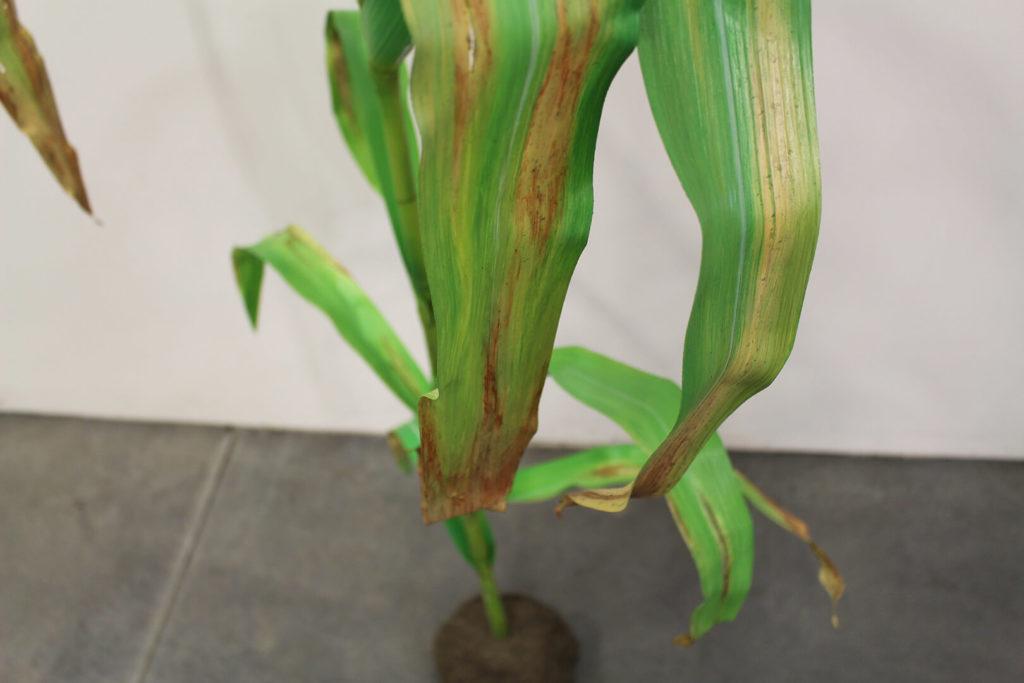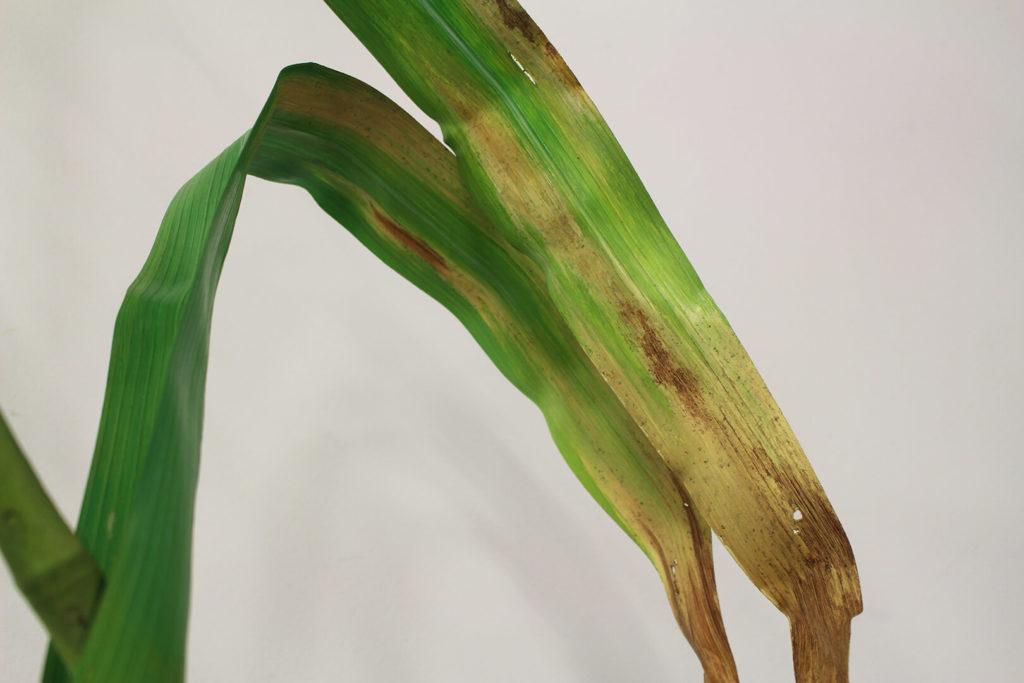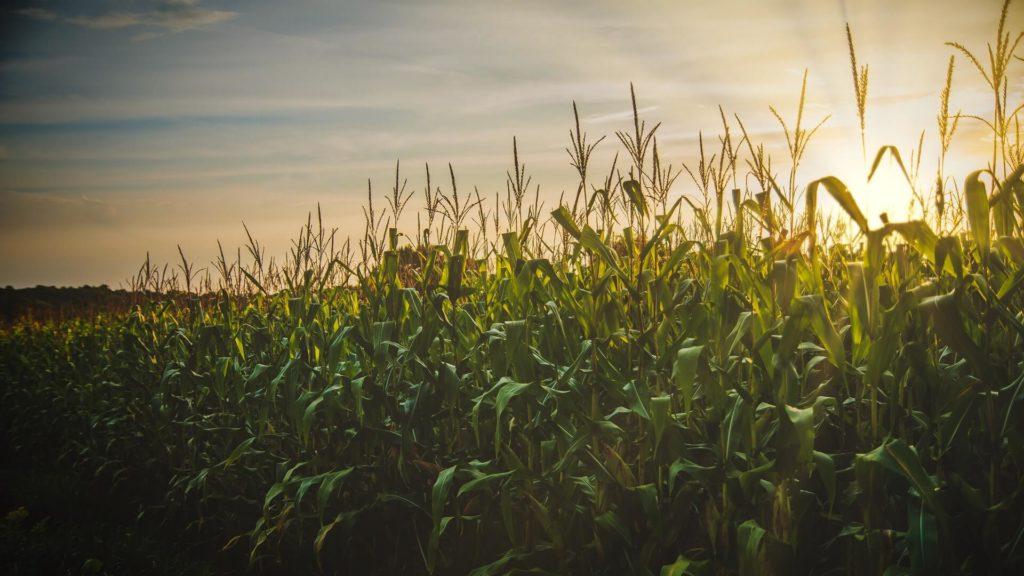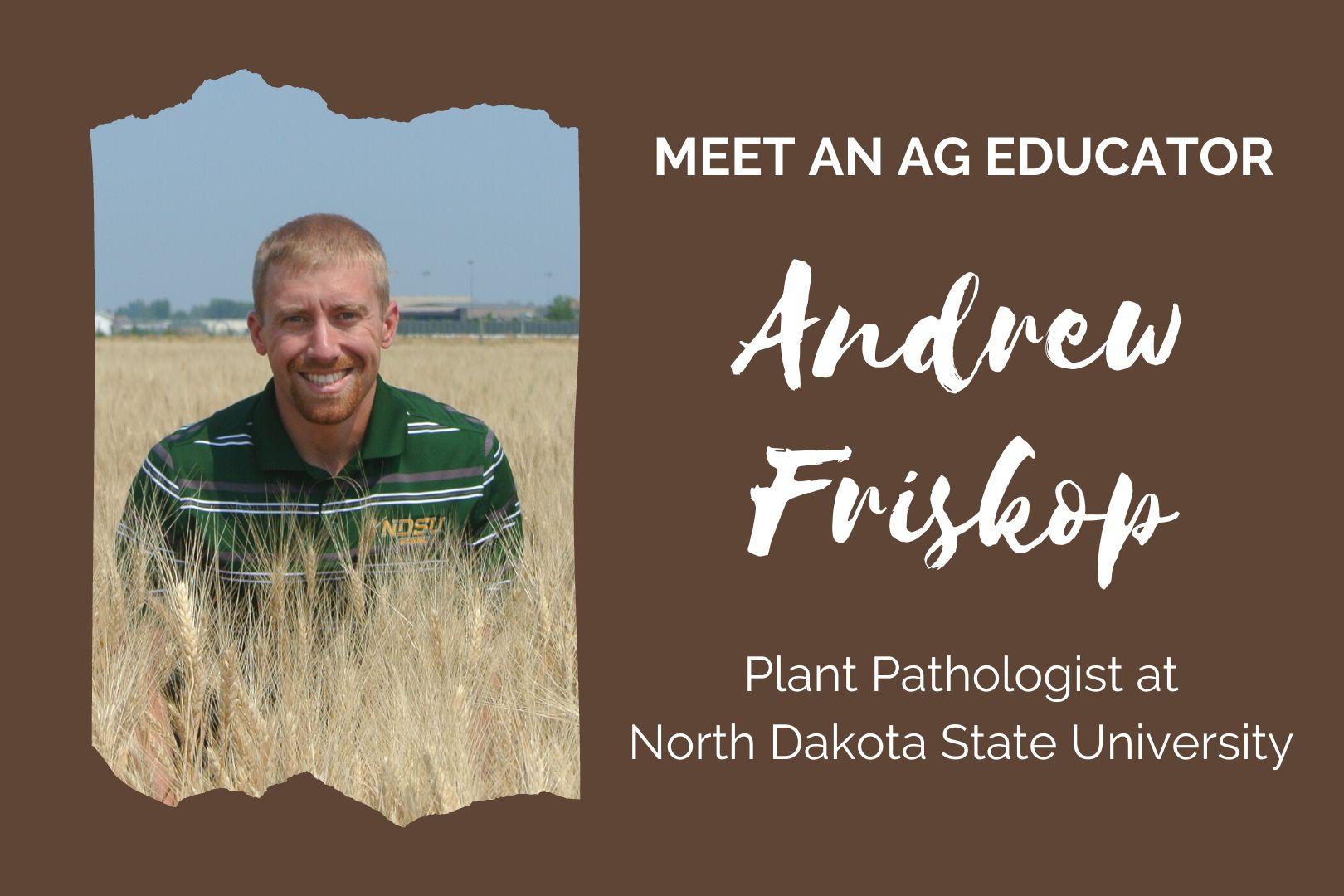
Last month, we talked with an ag educator who works with both consumers and producers. But what about the ag education that happens only on the producer side? That’s what we want to highlight this week.
As a plant pathologist, Andrew Friskop helps farmers learn to recognize plant diseases. That way, they can treat diseases quicker and (hopefully) prevent losses. There’s lots of ways to teach disease identification, of course. Andrew talked to us about what his programs focus on and how he tries to avoid “death by PowerPoint.”
Exhibit Farm: Could you define plant pathology briefly, in case some of our readers haven’t heard of it before?
Andrew Friskop: So the easiest way I look at it is, “anything that makes a plant look different”. A lot of times it’s sick-looking plants. Sometimes it may just look like an off-type. And the idea is to identify what’s causing these plants to look sick, and then find ways to remedy the situation.
The best way I can describe it is, when you go to a grocery store and you’re looking through tomatoes or potatoes, you don’t automatically grab the one that has a big dark spot on it, right? We’re trained to look for things that have what we call a sense of perfection. That’s at the consumer level, and then in the larger agriculture realm, [for] wheat and corn producers, anything that is making their plants look sick, and is reducing their yield, is reducing their profits.
So there’s a couple different angles to look at it, but everyone can relate to plant pathology, even if you weren’t aware of it.
EF: And what does your everyday work involve?

AF: My job looks at finding applied management strategies for diseases of wheat, barley, and corn in the state. And once we develop that management strategy, most of my time is out there trying to present that or educate producers [and] crop consultants how we can use best management practices for the diseases we face.
EF: So what are some of the major diseases in your area?
AF: For small grains, the disease I talk about the most is called fusarium head blight, or scab [as it’s] commonly known across the USA. It’s been our number-one disease in small grains for probably the last 25-30 years. It’s a disease that always presents new challenges. Those challenges may be on the management side or those challenges might be educating growers that [aren’t] familiar with how to manage the disease.
On the corn side, our number-one disease in the state is Goss’ Wilt. In North Dakota we don’t have as many corn diseases as my counterparts do in the I-states or the Corn Belt. But Goss’ Wilt is the one that has been a focus of my extension programming lately. A lot of that has to do with just different ways to teach the agricultural industry how to identify it in North Dakota.
EF: So what educational strategies are most effective for helping people identify those diseases?
AF: I don’t have a classroom appointment, so all of my students are in the city halls, they’re at maybe the local bar or wherever we’re having the meeting. Small-town USA is kind of where I’m at. I have to use traditional methods, so I still have the papers and I have the brochures to hand out. But in the last five to six years, I’m looking at ways to be more creative in my delivery.
And one example is producing models, like when Exhibit Farm produced a [plant replica showing] Goss’ Wilt for me. I carry it with me just about anywhere I go when I give a corn disease talk. It gives them an element to [help] them remember what a corn plant looks like in the middle of winter, and in some cases [I can] show them how we break down that plant and look for these symptoms and what they look like. It’s been a conversation piece everywhere I go.

And I supplement that with real-life photos to give a more well-rounded approach. In a lot of ways it connects me more when I have something that’s different and new. I try to avoid “death by PowerPoint;” I’ve used as much creativity as I can over the last couple years.
EF: And lastly, what got you interested in plant pathology in the first place? And why did you decide to go for an educational career instead of something like agronomy?
AF: Yeah, good question. I was always interested in agriculture. I grew up in a small town in southeast North Dakota, although I wasn’t raised on a farm. Both my parents were teachers in the high school, and both of them [put a] big emphasis on teaching other students, a “teach the teacher” mentality. And that always kind of stuck with me.
My interest in agriculture began on the research side, [with] some of my first experiences in labs. When I got my degree in Crop & Wheat Sciences, I thought I was going to be an agronomist. But something about plant pathology just came easy to me, so I just kept on pursuing a different degree, changing offices, although I did all my education at North Dakota State. That’s also been a huge advantage in my job, being able to relate and develop relationships quickly, being able to know someone in each area of the state.
It started with an education background, then I found my calling in the discipline, and it all kind of comes full circle, being able to teach individuals that are making economic decisions for the livelihood of rural North Dakota.

